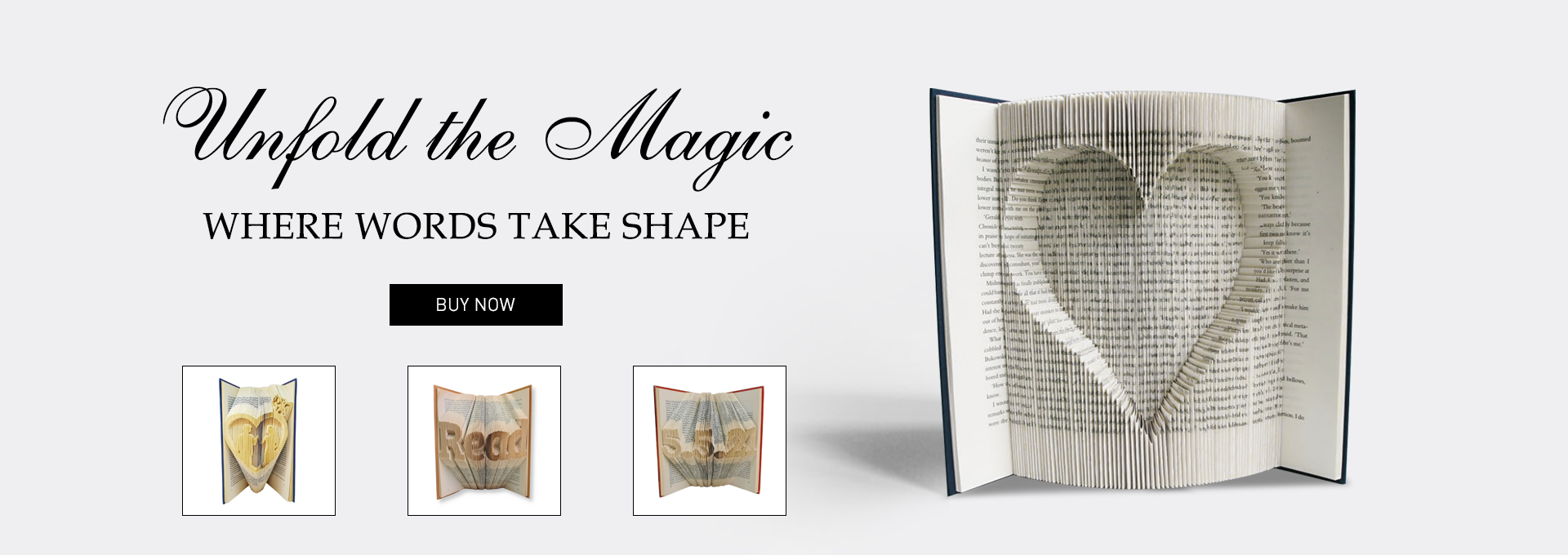Turning Pages into Art: The Enchanting World of Book Folding
In a world where technology dominates our reading habits, a unique and charming art form has emerged from the pages of our beloved books. Book folding is a creative practice that transforms ordinary novels and paperbacks into stunning three-dimensional sculptures, breathing new life into stories that might otherwise gather dust on the shelf. This mesmerizing craft not only celebrates the beauty of literature but also invites crafters and art enthusiasts alike to explore the imaginative possibilities hidden within the confines of a book.
At its core, book folding takes the simplicity of printed paper and turns it into something spectacular. By carefully manipulating the pages, artists can create intricate shapes, from delicate flowers to whimsical animals and meaningful quotes. This enchanting world of book folding reveals a playful yet thoughtful relationship with literature, reminding us that every book holds not just a story to tell, but a canvas waiting to be transformed into a beautiful piece of art. Whether for personal enjoyment or to gift to a fellow book lover, the art of book folding inspires creativity and rekindles appreciation for the written word.
History of Book Folding
Book folding has a rich and fascinating history that dates back several centuries. The art form likely originated in Europe around the 19th century, where it gained popularity among book lovers and artisans. Initial instances of book folding were often associated with preserving historical texts and making them more visually appealing through intricate designs. As books became more accessible and widespread, the practice evolved into a creative outlet for individuals who cherished the physical medium of paper.
During the Victorian era, book folding became a favored pastime among the well-to-do. Crafting elaborate designs became a sign of sophistication and artistic flair. Many turned to book folding as a form of self-expression, creating personalized gifts for friends and family. Techniques were passed down through generations, with artisans refining their skills and introducing new patterns. This period solidified book folding as both a hobby and an art form, embracing the blend of literature and craft.
In the modern era, book folding has seen a resurgence in popularity thanks to social media and craft communities online. Tutorials and patterns are widely shared, enabling enthusiasts of all skill levels to engage with this art form. With a blend of tradition and innovation, contemporary book folding incorporates elements from various artistic movements, transforming old books into stunning three-dimensional sculptures. This evolution speaks to the timeless appeal of books and the continuous exploration of their potential beyond mere reading material.
Techniques and Tools
Creating art through book folding requires a blend of techniques and tools to achieve intricate designs. One of the foundational techniques is the precise measurement of folds. Many artists use a ruler and craft knife to create clean, even folds, which are essential for maintaining symmetry and clarity in the design. Measuring and marking the folds on the book pages beforehand ensures that the final artwork is visually appealing and consistent.
In addition to the basic tools, specialized book folding tools can enhance the creative process. A bone folder, for example, helps create sharp creases without damaging the paper. There are also folding guides or templates available, which provide outlines for various designs, allowing crafters to replicate their favorite patterns with ease. Utilizing these tools not only simplifies the process but also allows for greater precision in more complex designs.
Artists often explore different techniques by experimenting with various folding styles, such as single page folds or more elaborate multi-page designs. Some may even incorporate additional materials like decorative paper or thread to add uniqueness to their creations. As with any art form, practice is key, and the more one employs these techniques and tools, the more intricate and beautiful the results will become.
Creative Inspiration
The world of book folding offers endless possibilities for creative expression. Artists and crafters find inspiration in both literature and visual design, transforming ordinary books into extraordinary sculptures. By selecting books with special meaning or unique aesthetics, creators can weave personal stories into their projects while exploring various themes and concepts. Each fold carries significance, inviting both the artist and the viewer to connect with the narrative behind the work.
Techniques in book folding range from simple designs to intricate patterns, inspiring artists to experiment and innovate. Online tutorials and community forums provide valuable resources, helping enthusiasts to acquire new skills and share their own creations. Social media platforms also serve as a canvas for showcasing these artistic endeavors, encouraging others to dive into the evolving world of book folding. As artists share their work, they not only inspire creativity but also foster a community united by a love for literature and art.
For those looking to embark on their own book folding journey, inspiration can often be found in the most unexpected places. Nature, architecture, and even personal experiences can influence the style and theme of a project. Whether replicating bookfolding , illustrating a beloved character, or crafting new designs, the possibilities are limitless. The act of transforming pages into art not only revitalizes old books but also breathes new life into the stories they hold, allowing imagination to flourish in the form of folds and creases.
